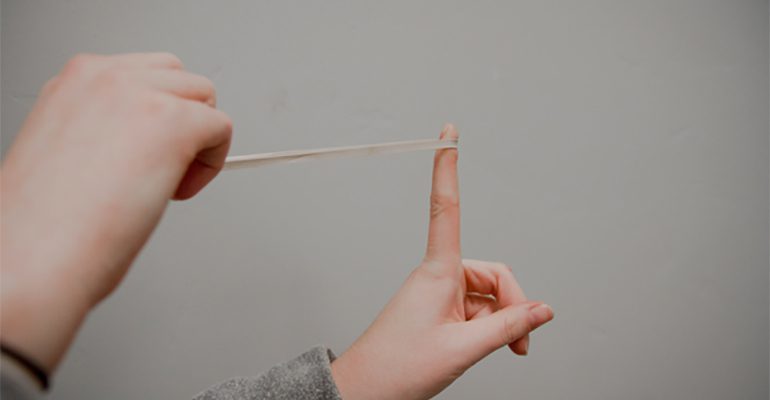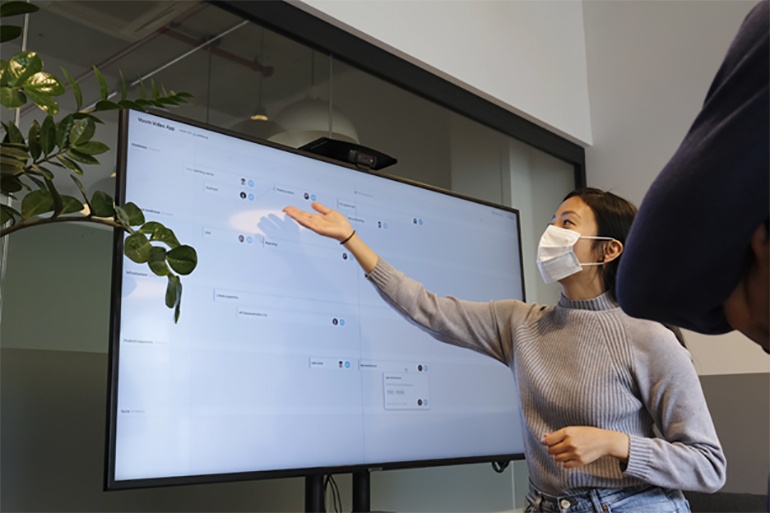
For many, the natural attitude towards conflict is to avoid it. But in the workplace, conflict is a natural, sometimes everyday, occurrence, with tensions often arising whenever ideas clash.
But this doesn’t have to be a bad thing. Despite the pejorative connotation of conflict, when handled effectively, disagreements can serve as the catalyst for creativity.
This is what’s called “constructive” or “creative” tension.
What Is Creative Tension?
The term “creative tension” was coined by author and MIT Sloan lecturer Peter Senge (the same man who popularised the “learning organisation”) in his 1990 book, The Fifth Discipline.
Senge describes creative tension as the “gap between vision and current reality”—or the place between reality and desired results. Senge goes on to explain that this gap is also a source of energy. “If there were no gap, there would be no need for any action to move towards the vision,” he adds.
Creative tension straddles the line between uncertainty and direction. Senge argues that maintaining some level of creative tension in teams and organisations creates an impetus to resolve that uncertainty. In turn, this creates opportunities to bounce around new ideas and drive innovation.
Three Components of Creative Tension
To create and maintain creative tension, leaders and managers need to look at its three primary components:
1. The Status Quo
Leaders should see to it that team members and key stakeholders have a shared understanding of the current state of things. This ensures that everyone on the team is on the same page and fully understands the reality of their situation—what’s working, what’s wrong, and why things are the way they are.
This seems like common sense, but with only 13% of global employees feeling engaged at work, managers need to do more to communicate more effectively with their team members.
2. Desired Outcomes
This is where vision comes in. Once leaders help their team members develop a shared understanding of the status quo, they can proceed to establish buy-in and motivate employees to reach the team’s goals.
Leaders can take things further by including personal development to help employees establish personal goals.
One way to make goal-setting effective is to use the SMART Goals system—a management framework that sets the following criteria for effective goals:
- Specific
- Measureable
- Achievable
- Relevant
- Time-bound
An example of a SMART goal would be: “2020 was a bad year for revenue (relevant). We need to increase sales (specific) by 25% (measurable) by the Q2 of 2021 (time-bound). We need to highlight the launch of our new products through a content marketing campaign (achievable) and generate consumer interest.”
3. Accountability
Team members must also know what’s at stake so they can hold themselves and each other accountable for achieving the team’s goals. This step rides on the leader’s ability to adequately explain the status quo and get everyone to see the value of the team’s SMART goals.
Benefits of Maintaining Creative Tension

Rather than see tension as a hindrance, organisations can manage conflict and uncertainty to drive growth and move the organisation forward. Here are some benefits of maintaining creative tension in your team or organisation.
1. Ingenious and Creative Work
American chewing gum tycoon William Wrigley Jr. once argued that business is built on a foundation of disagreements, noting that “When two men always agree, one of them is unnecessary.”
Apple co-founders Steve Wozniak and Steve Jobs come from very different backgrounds and had conflicting ideas of what a personal computer should be. “Woz” is a major proponent of open systems while Steve Jobs favoured closed and controlled computing environments. But their ability to combine their strengths—one being a computing genius and the other a visionary salesman—led to the tech giant we know today.
2. Drive and Focus
The same nagging feeling people have when they have unfinished tasks is what can also push teams and organisations to focus on achieving their goals. People naturally want to resolve uncertainty and conflict, after all.
Senge likens this tendency to a stretched rubber band. This creates tension between two points: the current reality and vision. To relieve this tension, teams can either bring the reality closer to their vision or pull the vision closer to reality. Whatever the case, maintaining healthy levels of creative tension drives people to focus on achieving common goals.
3. Cost Effectiveness
Team members that avoid disagreements and contradicting each other in public can create the illusion that the business is running smoothly, But in reality, constant agreements often stifle decision-making and growth.
In one survey, top executives estimated that “conflict avoidance” and “analysis paralysis” cost their companies almost US$16,000 per day.
Leaders should be wary about feigning and fostering consensus. Team members must be willing to embrace conflict and respectfully work out differing perspectives to hammer out new and better ideas.
Embrace Tension Instead of Feigning Harmony
Admittedly, maintaining creative tension is easier said than done, especially since it goes against our natural instinct to have harmony in the workplace. Leaders must overcome their inherent fear to avoid failure and stamp out disagreements. To nurture an environment that encourages risk-taking and new perspectives, organisations must create a culture that focuses on diverse issues, not just diverse people. The workplace should also be a safe space for disagreements without fear of being judged or ridiculed.
Agreement and consensus have their place, but if everyone on the team agrees all the time, how can creative ideas, positive change, or innovation happen? This is the exact problem creative tension seeks to solve.
Contact Us
Creative tension is one crucial element of Learning Organisation and Systems Leadership. Learn how you can build a Learning Organisation with SIM through bespoke L&D programmes and a range of systems leadership courses here. Speak with us today for an in-depth discussion to assess your training needs.
through a structured training roadmap? Let us
help you with a curated L&D programme.

